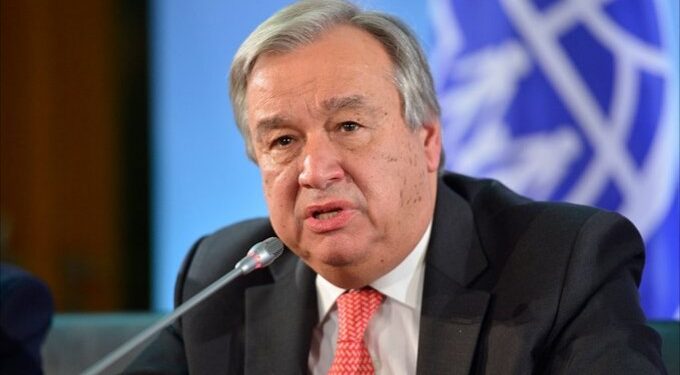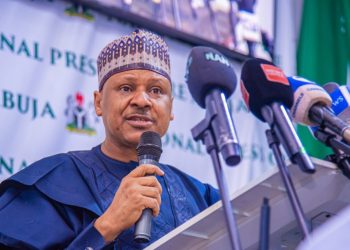United Nations Secretar-General, Antonio Guterres has said that half the world is sinking into development disaster, fuelled by a crushing debt crisis, in the main message of the report presented. “A World of Debt”.
Guterres who disclosed this in his remarks to the Press at the launch of the Report “A World of Debt” on Wednesday, added that 3.3 billion people, almost half of humanity live in countries that spend more on debt interest payments than on education or health.
He emphasized that yet, because most of these unsustainable debts are concentrated in poor countries, they are not judged to pose systemic risk to the global financial system, saying this is a mirage. “3.3 billion people is more than a systemic risk. It is a systemic failure”, Guterres said.
UN Chief pointed out that markets may seem not be suffering yet. “But people are. Some of the poorest countries in the world are being forced into a choice between servicing their debt, or serving their people.
“They have virtually no fiscal space for essential investments in the Sustainable Development Goals or the transition to renewable energy. Levels of public debt are staggering and surging”, he lamented.
Guterres revealed that in 2022, global public debt reached a record $92 trillion US dollars while developing countries shoulder disproportionate amount. “A growing share is held by private creditors who charge sky-high interest rates to many developing countries.
“On average, African countries pay four times more for borrowing than the United States and eight times more than the wealthiest European countries”, he said.

Adding that, “The International Monetary Fund says 36 countries are on so-called “debt row” either in, or at high risk of, debt distress. Another sixteen are paying unsustainable interest rates to private creditors.
The Secretary-General further said that a total of 52 countries almost 40 percent of the developing world are in serious debt trouble. “It is one result of the inequality built into our outdated global financial system, which reflects the colonial power dynamics of the era when it was created.
He voiced that the system has not fulfilled its mandate as a safety net to help all countries manage today’s cascade of unforeseen shocks – the pandemic; the devastating impact of the climate crisis; and the Russian invasion of Ukraine.
Though, the UN Chief noted that debt is an important financial tool that can drive development and enable governments to protect and invest in their people, adding that when countries are forced to borrow for their economic survival, says debt becomes a trap that simply generates more debt.

According to him, “Today’s report is our most detailed picture yet of this unfolding debt crisis, with a wealth of comparisons and context. It also sets out our roadmap to global financial stability.
“A roadmap already put forward in our Policy Briefs on reforms of the Global Financial Architecture and the SDG Stimulus. Deep reforms to the global financial system will not happen overnight. But there are many steps we can take right now.
“Our proposals include an effective debt workout mechanism that supports payment suspensions, longer lending terms, and lower rates, including for vulnerable middle income countries.
“Governments can agree right now to scale up development and climate finance by increasing the capital base and changing the business model of Multilateral Development Banks.
“They can enable much stronger coordination between the banks, to transform their approach to risk without losing their triple A credit rating, so that they can massively leverage private finance at affordable cost to developing countries”, he said.












